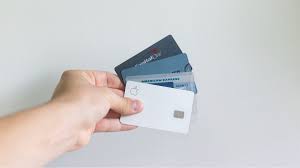Are you drowning in credit card debt, desperately seeking a way out? Look no further, for financial freedom awaits!
Mastering the art of negotiating credit card debt holds the key to unlocking a brighter financial future. But where do you begin? How can you navigate the complex world of debt negotiation with confidence and success?
In this discussion, we will explore the crucial steps to assess your debt, understand the negotiation process, gather necessary documentation, craft a persuasive strategy, and initiate contact with credit card companies.
By the end, you will have the tools and knowledge needed to negotiate debt reduction and interest rates, ultimately finalizing a repayment plan that works in your favor.
So, are you ready to take control of your financial destiny?
Assessing Your Credit Card Debt
To assess your credit card debt, take a close look at your statements and calculate the total outstanding balance. Start by gathering all your credit card statements from each issuer. Carefully examine each statement to identify any charges, fees, and interest rates. Make note of the due dates and minimum payment amounts for each card. By calculating the total outstanding balance, you’ll have a clear understanding of the amount of debt you currently owe.
To calculate the total outstanding balance, add up the balances from each credit card statement. This will give you an accurate picture of your overall credit card debt. Be sure to include any late fees or penalties that may have been added to your balance.
Next, take a moment to review your interest rates. High-interest rates can significantly increase the amount of debt you owe over time. If you have multiple credit cards, consider focusing on paying off the card with the highest interest rate first. This strategy can help you save money in the long run.
Once you have assessed your credit card debt, you can begin to develop a plan to pay it off. Remember, knowledge is power, and understanding the full extent of your debt is the first step towards financial freedom.
Understanding the Negotiation Process
Now that you have assessed your credit card debt and understand the amount you owe, it’s time to understand the negotiation process. Negotiating your credit card debt can be an effective way to reduce the amount you owe and achieve financial freedom. The negotiation process involves reaching an agreement with your credit card issuer to settle your debt for less than the total amount owed.
To begin the negotiation process, you should first gather all the necessary information about your debt. This includes details such as the outstanding balance, interest rates, and any late fees or penalties. Once you have this information, you can approach your credit card issuer to discuss your situation and propose a settlement offer.
During the negotiation, it’s important to remain calm, polite, and firm. Clearly explain your financial difficulties and why you’re unable to pay the full amount. Be prepared to provide supporting documents such as income statements or medical bills if necessary.
Your credit card issuer may be willing to negotiate if they believe that receiving a reduced payment is better than receiving nothing at all. They may offer to lower the interest rate, waive late fees, or even accept a lump sum payment for a percentage of the total debt.
Remember, negotiation is a two-way process. Be open to counteroffers and be prepared to negotiate until both parties reach a mutually beneficial agreement. Once an agreement is reached, make sure to get it in writing and fulfill your part of the agreement promptly.
Understanding the negotiation process is crucial when it comes to tackling your credit card debt. By being proactive and persistent, you can increase your chances of successfully negotiating a favorable settlement and achieving financial freedom.
Gathering Necessary Documentation
To successfully negotiate credit card debt, you need to gather the necessary documentation.
This includes required paperwork for negotiation and essential documents for debt settlement.
Having all the relevant paperwork ready will help you present a strong case and increase your chances of reaching a favorable agreement with your credit card company.
Required Paperwork for Negotiation
When negotiating credit card debt, it’s crucial to have all the necessary paperwork in order. Start by gathering your credit card statements, which will provide you with a clear overview of your outstanding balances and any additional fees or charges.
Additionally, collect any correspondence you have received from the credit card company, such as collection letters or settlement offers.
It’s also important to gather your personal financial documents, including your income statements, bank statements, and tax returns. These documents will help you demonstrate your financial situation and provide evidence to support your negotiation efforts.
Essential Documents for Debt Settlement
To gather the necessary documentation for debt settlement, start by organizing your credit card statements and any correspondence you’ve received from the credit card company. These documents are crucial for negotiating your credit card debt effectively.
Begin by gathering all your credit card statements, both current and past, to have a clear overview of your outstanding balances, payment history, and any additional fees or charges.
Make sure to include any correspondence you’ve received from the credit card company, such as collection letters or settlement offers. These documents will provide important details about your debt and can serve as evidence during the negotiation process.
Crafting a Persuasive Negotiation Strategy
How can you craft a persuasive negotiation strategy for negotiating credit card debt?
When it comes to negotiating your credit card debt, having a well-crafted strategy is essential for achieving a successful outcome. The first step is to thoroughly assess your financial situation and determine how much you can realistically afford to pay. This will provide you with a solid foundation for your negotiation efforts.
Next, it’s important to gather all relevant information about your credit card debt, including the outstanding balance, interest rates, and any fees or penalties that have been added. Armed with this information, you can approach your credit card company with a clear understanding of your debt and the issues you’re facing.
When crafting your negotiation strategy, it’s crucial to be prepared and organized. This includes creating a budget that demonstrates your ability to make reasonable payments. It’s also helpful to have a written proposal outlining your proposed terms for debt settlement.
During the negotiation process, it’s important to remain calm and composed. Clearly communicate your financial difficulties and the reasons why you’re seeking a reduced payment or settlement. It can also be beneficial to leverage any available leverage, such as mentioning your willingness to seek assistance from a credit counseling agency or explore bankruptcy options.
Initiating Contact With Credit Card Companies
When initiating contact with credit card companies, it’s important to have all your relevant information and documentation prepared. This will help streamline the process and show the credit card company that you’re serious about negotiating your debt.
Start by gathering your most recent credit card statements, as well as any correspondence or notices you have received from the company. Take the time to review these documents carefully and make note of any fees, interest rates, or other charges that seem excessive or unfair.
Next, compile a list of questions or concerns you have regarding your credit card debt. This could include inquiries about payment options, potential interest rate reductions, or the possibility of settling for a lower amount. Having these questions written down will ensure that you don’t forget anything during the conversation.
Once you have all your information and questions prepared, it’s time to make the call. Be polite and professional when speaking with the credit card company representative. Clearly explain your situation and express your willingness to work towards a resolution. Remember, the goal is to find a mutually beneficial solution that will help you pay off your debt while also satisfying the needs of the credit card company.
Negotiating Debt Reduction and Interest Rates
You can negotiate debt reduction and lower interest rates by presenting your financial situation and demonstrating a willingness to work towards a mutually beneficial solution. Start by gathering all the necessary financial documents, such as bank statements, credit card bills, and income statements. This will help you paint a clear picture of your current financial situation.
When contacting your credit card company, be polite and professional. Explain your financial hardship and the reasons why you’re struggling to make payments. Provide details about your income, expenses, and any extenuating circumstances that have impacted your ability to meet your financial obligations.
It’s important to show that you’re committed to resolving your debt issues. Offer a reasonable and realistic repayment plan that you can afford. This may involve requesting a lower interest rate or a reduction in the total amount owed. Emphasize your willingness to make regular payments and demonstrate your dedication to becoming debt-free.
Remember to negotiate from a position of strength. Highlight any positive factors, such as a good credit history or a long-standing relationship with the credit card company. Be prepared to negotiate and compromise, as both parties should be willing to find a solution that works for everyone.
Finalizing a Repayment Plan
After successfully negotiating debt reduction and interest rates, the next step is to finalize a repayment plan that suits both parties involved. This is a crucial step in your journey towards financial freedom.
To begin, gather all the information you have about your debt, including the total amount owed, interest rates, and any additional fees or charges. With this information in hand, you can create a realistic and achievable repayment plan.
Start by determining how much you can afford to pay towards your debt each month. Consider your income, expenses, and other financial obligations. It’s important to be honest with yourself and set a realistic goal. Remember, the key is to make consistent payments that will gradually reduce your debt.
Next, prioritize your debts based on interest rates and outstanding balances. While making minimum payments on all your debts is important, you should focus on paying off the debt with the highest interest rate first. This will save you money in the long run.
Once you have determined your monthly payment and prioritized your debts, communicate your plan to your creditors. Be open and transparent about your financial situation and explain how you intend to repay your debt. Most creditors are willing to work with you as long as you show a genuine commitment to paying off your debt.
Conclusion
Congratulations! You have taken the first steps towards financial freedom by mastering the art of negotiating credit card debt.
By assessing your debt, understanding the negotiation process, gathering necessary documentation, and crafting a persuasive strategy, you’re well-equipped to initiate contact with credit card companies and negotiate debt reduction and interest rates.
With a finalized repayment plan in place, you’re on your way to achieving your goal of being debt-free.


